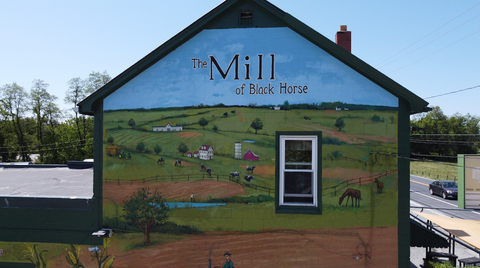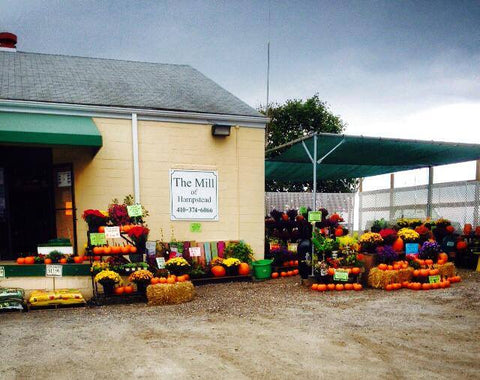Why Hydration Matters in Cold Weather
While it is common to think of horses drinking more in the hot and humid months of summer; some horses drink, or should drink, even more in the winter. There are many statistics out there addressing the amount of water horses should be drinking that range from 5-15 gallons a day. The truth is, each horse is an individual and there are a multitude of factors that play into thirst and hydration needs. So, the question of how much water a horse needs each day to maintain proper digestion and avoid dehydration is subjective. The amount of water a horse needs is specifically related to the amount of fluids it loses. Fluid loss in horses mostly occurs with sweating, urinating, manure and lactating.
During the winter when grazing on fresh green grass is not an option, most horses rely on hay and other hay alternatives for their forage needs. The fresh green grass carries a large percentage of water; while hay is much drier. In this example, even with this simple change, a notable increase in water consumption is needed to maintain a health digestive tract, avoid dehydration and other serious health concerns.
The horse’s body is well designed to store and utilize water; as water is the single most important nutrient in any horse’s diet. While proper hydration affects countless biomechanical functions and overall health benefits, for the purpose of this article we will focus on its importance in maintaining a healthy digestive tract.
Starting in the mouth, water helps to produce saliva. Saliva creates a sort of lubricant that accompanies the feed material throughout the entire tract. This is important to prevent choke and keep the feed material from getting dried out so that it travels appropriately throughout the digestive system. Water also plays a big part in helping to break down feed material; which in turn, helps the body to absorb nutrients. The gut microbes, known as The Good Bugs, also rely on water to help in the fermentation process and to keep the tract moving.
Water Temperature and Availability
Ideal Water Temperature
An interesting study was done at New Bolton Center in the 90’s that concluded:
Horses drank more water when warm water was the only option via either bucket heaters that were kept between 68-95 degrees or filling buckets with water ranging from 115-120 degrees twice daily at feeding time were both effective ways to increase water consumption during the cold weather.
However, when both warm and cold water options were available, the horses preferred the cold-water options.
While having tank heaters in the trough to prevent water from freezing is a great idea; topping off the troughs with hot water twice a day during feeding will likely encourage the horse to drink more water before it cools or forms ice.
The goal is to ensure that fresh clean water is always available to the horse. Try offering a mixture of the above options for your horse. Getting to know their individual likes and dislikes is key to managing adequate hydration.
Checking and Cleaning Trough
When the water is stale, dirty or frozen over, it’s no wonder why horses do not drink as much. It is important to keep your buckets and tanks clean and filled with fresh available water.
Monitoring water buckets and troughs multiple times a day is essential to keep your horses drinking. Check:
- Cleanliness
- Proper function of heating devices
A malfunction can not only allow the water to freeze but can also deter a horse from putting his nose to the water due to electric shock. In other cases, malfunctions can overheat the water and even start a fire.
Encouraging Water Consumption
Adding Salt/Mineral and/or Electrolytes
Offering salt/mineral and electrolytes to the diet is a great way to encourage water consumption. Remember that adding salt/mineral and/or electrolytes to the diet is only beneficial if the horse has access to fresh, clean, drinkable water. Electrolytes on their own do not hydrate a horse. In fact, administering electrolytes without access to water can create chemical imbalances that cause dehydration, as well as, a multitude of other health risks, up to and including death. As long as the horse has ample access to water, adding salt/mineral and/or electrolytes to their diet can be done by any one or combination of ways.
Adding dose as a top dress
Simply adding a dose as a top dress, per the products labeled instructions, to the horse’s feed or water.
If top dressing to feed, start small and build your way up to the full dose. Monitor your horse’s eating and tweak as necessary if the added salt/mineral/electrolyte backs them out of the feed tub. Most horses will adapt, but some can be sneaky and muzzle the fines to the bottom of the tub or turn their noses up to the entire meal. If they refuse to eat it, then try one of the later methods.
If adding to the water, be sure to offer a separate bucket or tank that is regular water. While this option allows the horse to choose not to drink the additives, it also ensures that if they do not like the smell or taste of the treated water they still have plenty of fresh clean water to drink from another source.
Providing free choice options
- Loose salt and mineral in a separate tub in a commonly visited area.
- Blocks or bricks in a separate tub or holder.
- Salt on a rope or incorporated into an enrichment ‘toy’ can serve as mental stimulation while also encouraging drinking.
Placement of free choice options can be a balancing act. While sometimes easier to place in stalls, run-in-sheds or dry lots; take care when placing it out in pastures. Have designated areas that keep it protected from the rain and snow to prevent it from dissipating. Also, be aware that if it gets into the grass it can burn and kill the grass.
Giving an electrolyte paste
An electrolyte paste is a concentrated dose that when given properly can replenish needed salt and mineral back into the system quickly. While this option tends to be a little more pricey, it is worth it’s weight in gold after extraneous exercise or exertion or in situations where immediate support is needed.
Take note that horses are individuals with their own unique set of likes, dislikes, quirks and personalities. While horses are designed to seek out nutrients that are lacking in their diets, not all horses do. Some horses may view free choice salt, mineral and electrolytes as a treat and overindulge at every opportunity. Others may pick at it but not consume enough to make much difference. Still, others may avoid it all together. Getting to know your horse by closely monitoring their preferences is key in managing their salt/mineral and electrolyte intake.
Soaked Feeds and Forage
Fresh green grass contains a high percentage of water. During the cold months when horses rely more on hay for their fiber/forage needs or when horses are kept away from pasture for any number of reasons, extra care needs to be given to ensure they are drinking enough to stay hydrated. Some simple ways to increase the water intake include:
- Offering soaked hay cubes, pellets or beet pulp along with their hay and/or feed.
- Many commercial feeds, especially those that contain beet pulp, soak very nicely.
- Beet pulp is known as a super fiber. As it is with forage, the longer the stem, the more beneficial to the gut microbes; and happy gut microbes help support a healthy digestive tract. You can find beet pulp in a few different forms:
- Fortified in commercial feeds
- Shreds
- Pellets
- Stay away from bran mashes! While this is an old school management practice, research has proven that bran, not only does not improve hydration, it leaches out existing hydration. In addition, it promotes inflammation. A simple solution to the bran mash is to replace the bran with beet pulp.
If you have any concern regarding your horse’s dentition, ability to chew and swallow, contact your veterinarian or one of our Mill equine specialists before pursing changes to their feed or forage.
Practical Winter Hydration Management Tips
- Horses should always have access to drinkable water.
- Keep water clean and fresh.
- Get to know your horse’s preferences in water temperatures and salt/mineral and electrolyte intake.
- Provide more than one option for water sources and temperatures.
- Offer salt/mineral and/or electrolytes.
- Monitor water tanks, buckets and heaters.
- Keep electrolyte paste and other forage alternatives that are easy to soak on hand for an easy hydration boost.
- Have a backup plan for power outages or frozen lines.
- Be prepared to be proactive rather than reactive.
FAQs
What can I do to help keep my horse hydrated?
There are several options to help keep your horse hydrated.
- Offer more than one source of water at different temperatures
- Provide salt, mineral and/or electrolytes
- Maintain and monitor you water sources to keep them clean and easy to drink from
- If still needs more hydration, incorporate soaked feed or hay alternatives, such as beet pulp, into the diet.
Should I use a tank heater or heated water bucket for my horse?
Using a bucket or tank heater to keep you horse’s water source from freezing is a good idea. The goal is to ensure that your horse always has access to fresh, clean water. If using a heater, monitor the device multiple times a day for proper function. You may, also, want to consider adding another water source at a different temperature to encourage drinking.
Why is it so important that my horse drink a lot in the winter when I’m not riding?
Even when you are not working your horse, they still have daily water consumption requirements. In the winter, most horses transition from eating fresh green grass as their primary forage source to hay and hay alternatives. Fresh green grass has a high percentage of moisture content, whereas, hay is much drier. This forage base change, alone, requires more water consumption to keep the digestive tract healthy and functioning properly.
How do I add salt/mineral or electrolytes to my horse’s diet?
There are a variety of ways add salt, mineral and/or electrolytes to your horse’s diet via:
- top-dress in their feed or water
- giving access to free choice options, such as:
- loose
- bricks
- blocks
- incorporated into enrichment devices
- paste
It is important to monitor your horse’s preferences for the additives and manage appropriately so that you are not backing them out of their feed tub, causing them to avoid drinking, or allowing over-consumption that could lead to vitamin/mineral imbalances. Be sure to talk with your veterinarian before starting a salt/mineral and/or electrolyte supplementation and always keep fresh, clean, drinkable water sources available to your horse.























